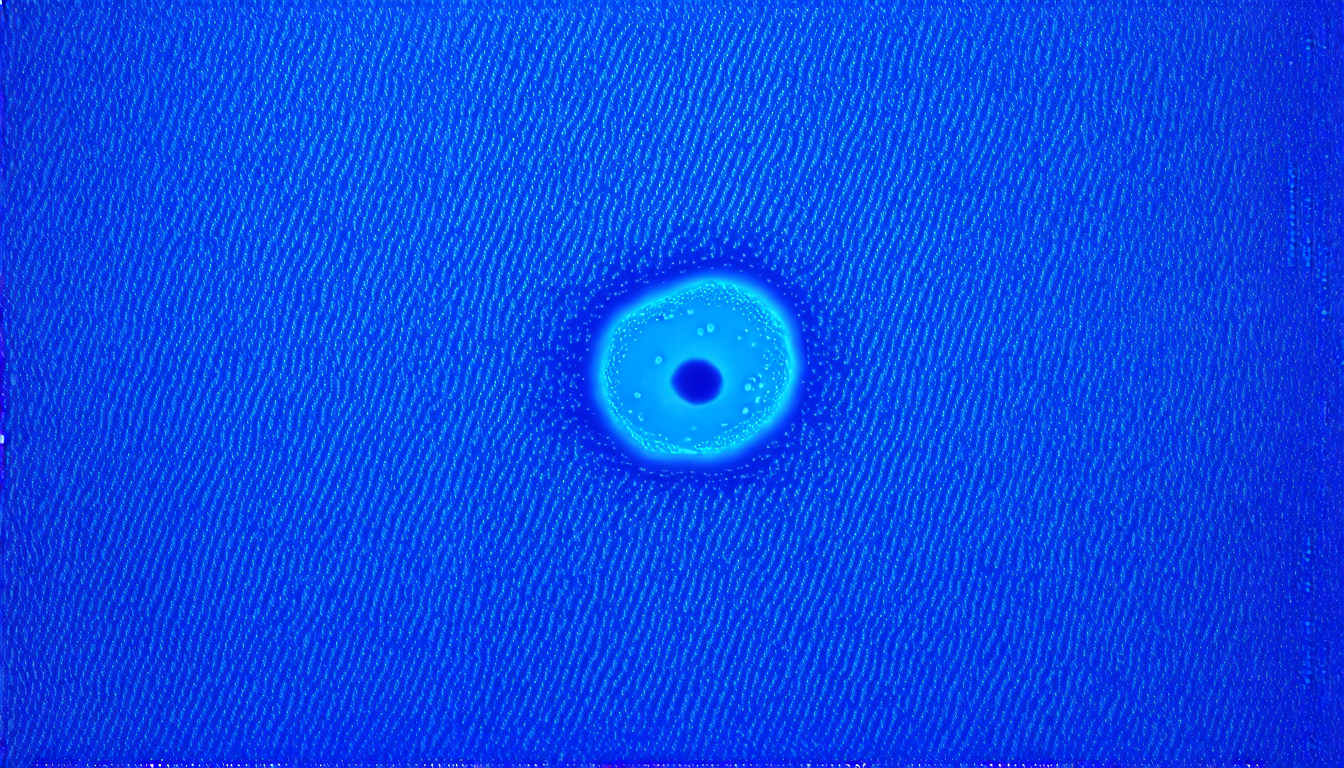Tuesday 09 September 2025
Cellular chaos theory has long been a topic of fascination for scientists, but new research is shedding light on how this chaos can lead to the formation of holes in cell monolayers. These holes are crucial for tissue integrity, and understanding how they form could have significant implications for our understanding of development, disease, and even wound healing.
The study focused on a type of cell called MDCK cells, which are commonly used in laboratory settings due to their ability to form confluent monolayers. When these cells are grown on soft substrates, researchers found that they can develop regions of local nematic order, where the cells align themselves in a specific direction.
But what’s interesting is that this alignment isn’t just aesthetically pleasing – it also leads to topological defects, or points where the cell monolayer becomes distorted. These defects can concentrate stress and create conditions ripe for hole formation.
The researchers used a combination of theoretical modeling and computer simulations to investigate how these holes form. They found that reducing substrate friction allows cells to move more freely, leading to increased correlations between cell velocities. This, in turn, enhances the concentration of stress at topological defect sites, making it easier for holes to form.
But here’s the really interesting part: the researchers also discovered that the stability and persistence of these holes depend on both substrate friction and cellular activity. In other words, the ease with which cells move and interact with their environment plays a significant role in determining whether holes will close or persist.
This research has significant implications for our understanding of tissue development and disease. For example, it could help explain how epithelial tissues – the layer of cells that lines many organs and glands – maintain their integrity in response to mechanical stress. It could also shed light on how diseases like cancer and Alzheimer’s affect cell behavior and tissue structure.
Furthermore, this research could have practical applications for wound healing and tissue engineering. By understanding how holes form and close in cellular monolayers, scientists may be able to develop new strategies for promoting tissue repair and regeneration.
In short, this study provides a fascinating glimpse into the complex dance of cells and their environment. It reminds us that even in the seemingly chaotic world of cellular biology, there are underlying patterns and mechanisms waiting to be uncovered – and understanding these mechanisms could lead to significant breakthroughs in our understanding of life itself.
Cite this article: “Holes in the Fabric: Unraveling the Mystery of Cellular Chaos”, The Science Archive, 2025.
Cellular Chaos Theory, Hole Formation, Cell Monolayers, Tissue Integrity, Mdck Cells, Nematic Order, Topological Defects, Substrate Friction, Cellular Activity, Wound Healing







